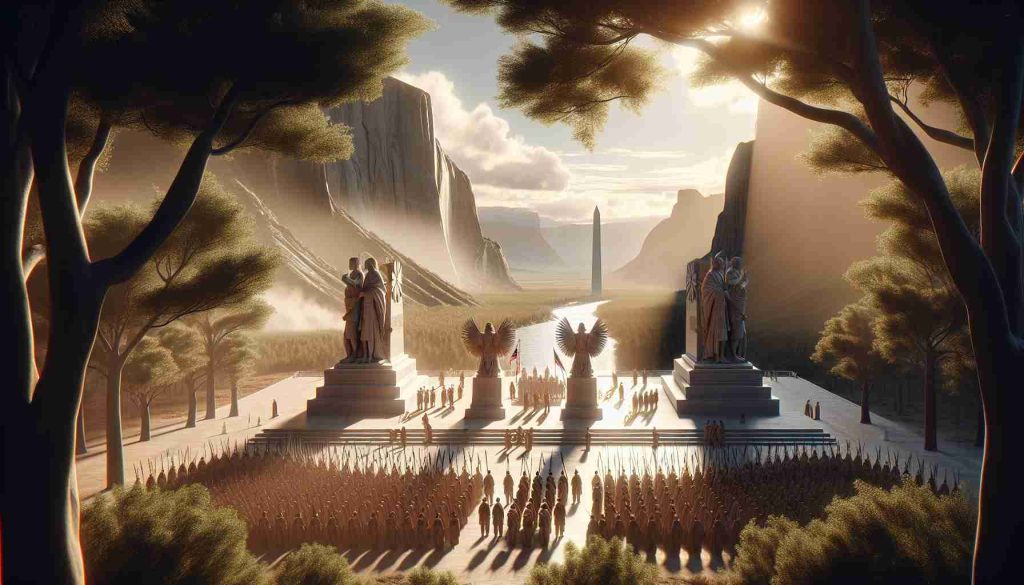President Joe Biden is set to make impactful waves with the establishment of two new national monuments in California, celebrating tribal heritage and environmental conservation. This new initiative will see the creation of the Chuckwalla National Monument in Southern California, located near Joshua Tree National Park, and the Sáttítla National Monument in Northern California. Information about this historic proclamation emerged from an anonymous source familiar with the upcoming announcement.
The declaration will protect approximately 600,000 acres in Southern California and 200,000 acres in Northern California from drilling, mining, and other forms of development. This initiative is a continuation of Biden’s “America the Beautiful” campaign, which was launched in 2021. Its goals aim to conserve 30% of public lands and waters by 2030 while honoring Native American cultural landscapes.
The Chuckwalla National Monument, named after the iconic desert lizard, is expected to preserve vital local ecosystems and military history, while enhancing access to nature for surrounding communities. Tribal leaders have advocated for the area to honor their sovereignty by ensuring local tribes can co-manage it, following the model established by the Bears Ears National Monument in Utah.
This designation represents a significant victory for the Pit River Tribe and other Native American groups who have long pushed for the protection of these lands, restoring connections to their cultural heritage and fostering environmental stewardship for future generations.
New National Monuments: Celebrating Heritage and Conservation in California
## Introduction
President Joe Biden’s recent initiative to create two new national monuments in California is poised to significantly impact both tribal heritage and environmental conservation efforts. This announcement, which has drawn attention from various stakeholders, reflects a broader commitment to protecting natural landscapes and honoring Indigenous cultures across the country.
## Overview of New National Monuments
### Chuckwalla National Monument
Located in Southern California, the Chuckwalla National Monument will cover approximately 600,000 acres near Joshua Tree National Park. This site is named after the Chuckwalla lizard, a species that thrives in this desert ecosystem. The area is set to be preserved from drilling, mining, and other forms of development, ensuring the protection of its unique habitats and historical sites, including aspects of military history.
### Sáttítla National Monument
In Northern California, the Sáttítla National Monument will encompass around 200,000 acres. It aims to safeguard vital landscapes that hold cultural significance for Native communities. Like Chuckwalla, this monument is part of Biden’s ongoing “America the Beautiful” initiative, which strives to conserve 30% of public lands and waters by 2030.
## Pros and Cons
### Pros:
– **Cultural Heritage Preservation**: Enhances the recognition and protection of Indigenous lands.
– **Environmental Protection**: Prevents harmful developments, preserving essential ecosystems.
– **Community Access**: Increases opportunities for local communities to engage with nature and cultural sites.
### Cons:
– **Development Restrictions**: Potential economic impact on areas that may have benefitted from mining or drilling.
– **Implementation Challenges**: Coordinating co-management with local tribes can require extensive negotiation and planning.
## Use Cases
### Tribal Co-Management
The establishment of Chuckwalla and Sáttítla presents an opportunity for local tribes to engage in co-management practices, ensuring their traditions and rights are respected while promoting ecological balance. This model can serve as a framework for other national monuments across the United States.
## Limitations
While the establishment of these monuments is a positive step, challenges may arise in terms of enforcement, funding for maintenance, and potential opposition from industries affected by the restrictions. Future administrations may also impact the longevity and effectiveness of such protections.
## Insights and Trends
The creation of these national monuments aligns with a growing trend towards recognizing and incorporating Indigenous knowledge in conservation efforts. Increased awareness of environmental issues and cultural significance underscores the importance of collaborative management approaches between federal authorities and Native American tribes.
## Security Aspects
Establishing national monuments also involves considerations around security and protection from illegal activities. Monitoring these vast landscapes will be crucial to ensure that the designated areas remain safe and undisturbed.
## Sustainability
The commitment to preserving large swaths of land is not only an environmental imperative but also a step toward sustainability, fostering biodiversity and reducing the human impact on fragile ecosystems.
## Conclusion
This landmark decision to establish the Chuckwalla and Sáttítla National Monuments marks a pivotal moment in conservation and Indigenous rights. With ongoing advocacy and support, these monuments can set a precedent for future initiatives aimed at balancing ecological preservation with cultural recognition.
For more information on national monuments and conservation efforts, visit the Department of the Interior.










More Stories
Global Attention Grabs Israeli News! Shocking Charges from Brazil!
Shocking Secrets of the DCEU! What Could Have Been?
India falters in Sydney Test! A shocking collapse leaves fans stunned!